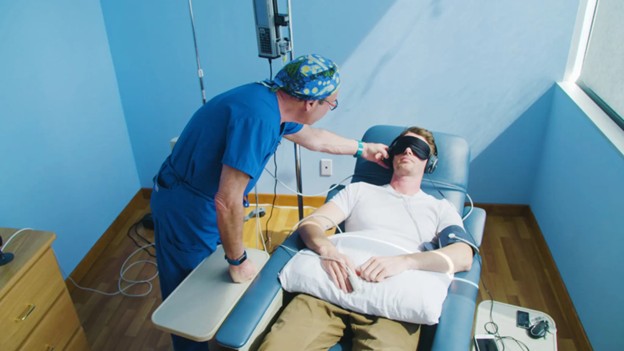Call Us: (833) 858-GIVE (4483)

Call Us: (833) 858-GIVE (4483)


Ketamine can be another option to consider for individuals with depression and substance use disorders who are not responding to medications or other commonly used treatments.
Ketamine is a psychedelic drug that is most commonly used medically for anesthetic purposes, however it is also used recreationally. Ketamine has been found to relieve pain and induce feelings of calm and relaxation.
Recently, ketamine has been approved for addressing treatment-resistant depression, or depression that has not improved from other forms of therapy.
In comparison to antidepressants, ketamine alleviates symptoms of depression quickly. Instead of seeing results over a period of weeks from medications, individuals with treatment-resistant depression have felt improvements within hours. Ketamine also serves as a potent anti-inflammatory for nerves and increases the body’s natural pain relievers.
Aside from ketamine’s anesthetic and hallucinogenic effects, research has suggested that ketamine prompts the production of glutamate in the body. Through a cascade of events, it stimulates the brain to create new neural connections, a process called neuroplasticity. As a result, the brain is able to adapt and individuals with depression have the opportunity to develop more positive behaviors and thought processes.
Currently, there are a few main methods of administering ketamine.
All different routes of ketamine administration come with a higher or lower bioavailability; in practice intravenous and intramuscular administration allows the most ketamine to affect the body, while the other routes result in lower effective doses due to metabolism and other factors.
Ketamine is carried out in a physician’s office or clinic under the supervision of a healthcare provider and commonly used to treat depression, post-traumatic stress disorder (PTSD), anxiety, obsessive- compulsive disorder (OCD), and chronic nerve pain.
Pharmacokinetic data suggests an intramuscular injection results in active drug levels very similar to a forty-minute-long infusion, and empirical studies have shown equivalent efficacy (or benefit) with intramuscular administration.
Intranasal (IN): A more potent form of Ketamine, otherwise known as esketamine is administered by a nasal spray. This method is commonly used to treat treatment-resistant depression (TRD).
1. Please click on the one time donation amount above that you wish to donate.
2. Then click Payment Method on the colored options below.
3. Fill out the payment information.
4. Please then enter your personal information in the form below and make sure you include your email address so you will receive your receipt and confirmation.
5. Once completed, click on the Donate Button on the bottom of the page.